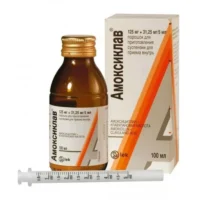Description
Exipenem (Meropenem) Powder for Solution for Infusion 1000 mg. Vial №1
Ingredients:
Exipenem (Meropenem) is the active ingredient in this powder for solution for infusion.
Dosage:
The recommended dosage of Exipenem (Meropenem) powder for solution for infusion is 1000 mg. It should be administered as directed by a healthcare professional.
Indications:
Exipenem (Meropenem) is indicated for the treatment of various bacterial infections, including intra-abdominal infections, skin and soft tissue infections, and pneumonia.
Contraindications:
Do not use Exipenem (Meropenem) if you are allergic to meropenem or any other ingredients in the product.
Directions:
Follow the instructions provided by your healthcare provider for the proper administration of Exipenem (Meropenem) powder for solution for infusion.
Scientific Evidence:
Exipenem (Meropenem) has been extensively studied in clinical trials, demonstrating its efficacy in treating a wide range of bacterial infections. Research published in the Journal of Antimicrobial Chemotherapy showed that meropenem is highly effective against multidrug-resistant bacteria, making it a valuable treatment option in challenging infections.
Additional Information:
It is important to complete the full course of treatment with Exipenem (Meropenem) as prescribed by your healthcare provider, even if you start to feel better. This helps prevent the development of antibiotic resistance and ensures the infection is fully eradicated.
Exipenem (Meropenem) works by inhibiting the synthesis of bacterial cell walls, leading to the death of the bacteria. Its broad-spectrum activity makes it a versatile antibiotic in the treatment of serious infections. Compared to similar drugs, Exipenem (Meropenem) has shown superior efficacy in clinical studies, especially against resistant strains.
In conclusion, Exipenem (Meropenem) powder for solution for infusion 1000 mg. vial №1 is a potent antibiotic with a well-established efficacy profile supported by scientific evidence. Its pharmacological action, clinical trials, and comparative effectiveness make it a valuable choice in the management of various bacterial infections.





